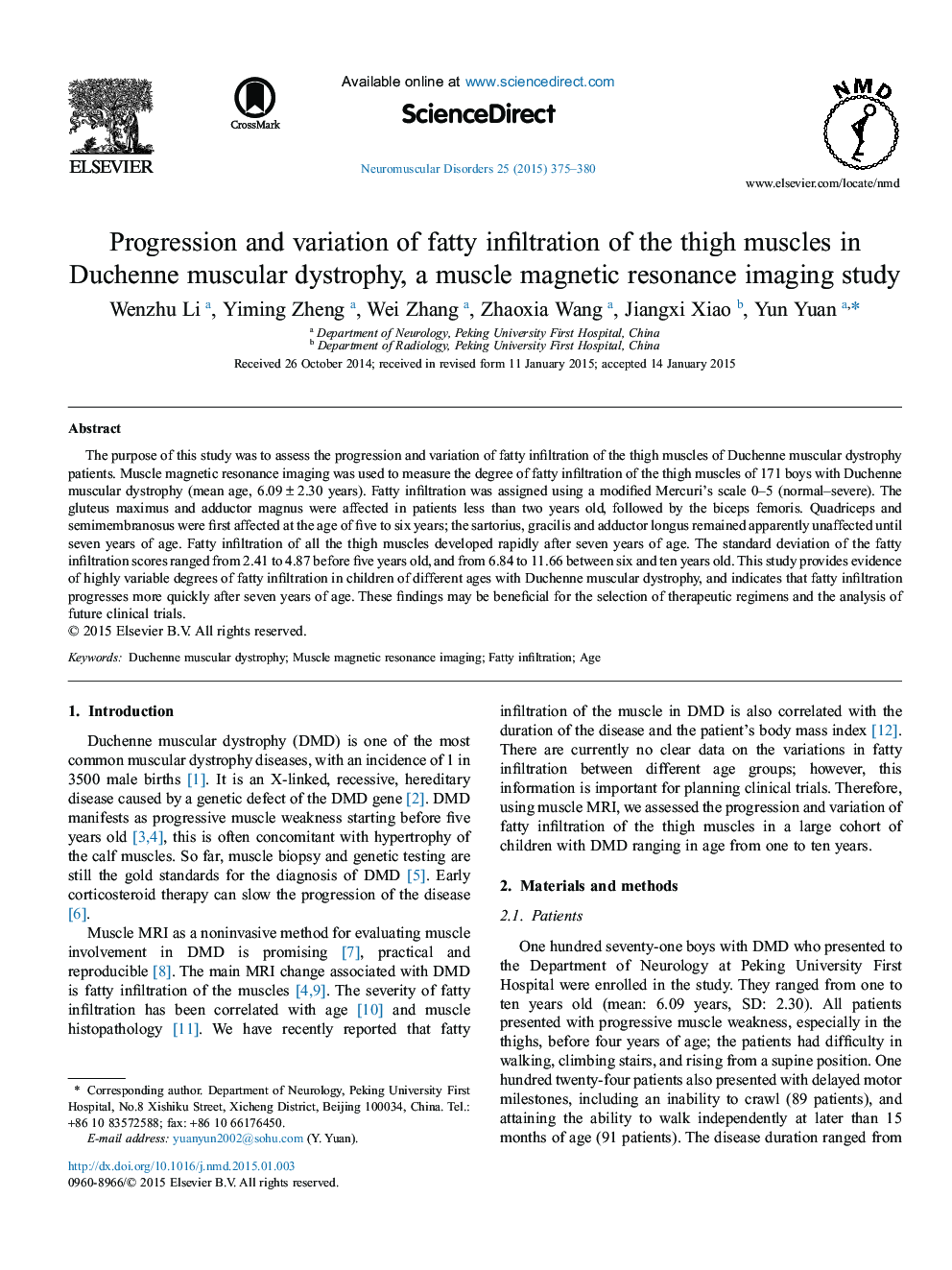| Article ID | Journal | Published Year | Pages | File Type |
|---|---|---|---|---|
| 3079088 | Neuromuscular Disorders | 2015 | 6 Pages |
•We recruited a quite large cohort of 171 boys with DMD.•Fatty infiltration was assigned using a modified Mercuri's scale 0–5 (normal–severe).•For comparison, the fatty infiltration was studied in different age groups.•We find large ranges of variation of fatty infiltration in different age groups.•Fatty infiltration progresses more quickly after seven years of age.
The purpose of this study was to assess the progression and variation of fatty infiltration of the thigh muscles of Duchenne muscular dystrophy patients. Muscle magnetic resonance imaging was used to measure the degree of fatty infiltration of the thigh muscles of 171 boys with Duchenne muscular dystrophy (mean age, 6.09 ± 2.30 years). Fatty infiltration was assigned using a modified Mercuri's scale 0–5 (normal–severe). The gluteus maximus and adductor magnus were affected in patients less than two years old, followed by the biceps femoris. Quadriceps and semimembranosus were first affected at the age of five to six years; the sartorius, gracilis and adductor longus remained apparently unaffected until seven years of age. Fatty infiltration of all the thigh muscles developed rapidly after seven years of age. The standard deviation of the fatty infiltration scores ranged from 2.41 to 4.87 before five years old, and from 6.84 to 11.66 between six and ten years old. This study provides evidence of highly variable degrees of fatty infiltration in children of different ages with Duchenne muscular dystrophy, and indicates that fatty infiltration progresses more quickly after seven years of age. These findings may be beneficial for the selection of therapeutic regimens and the analysis of future clinical trials.
